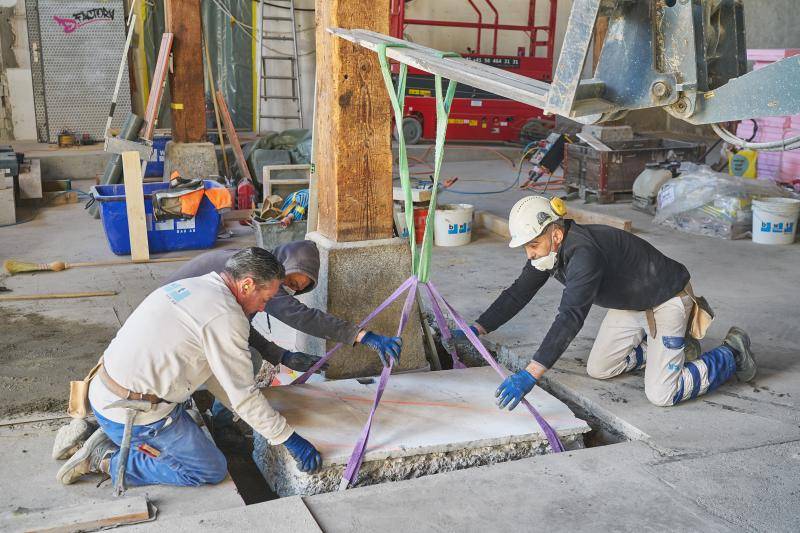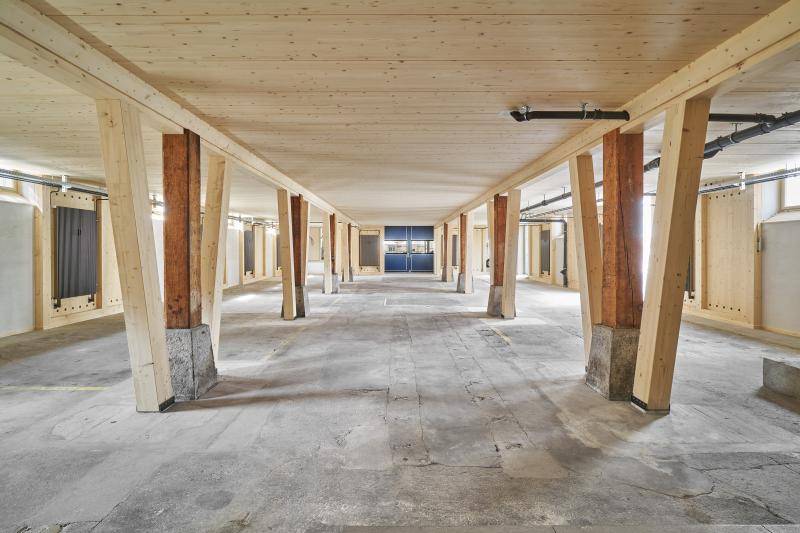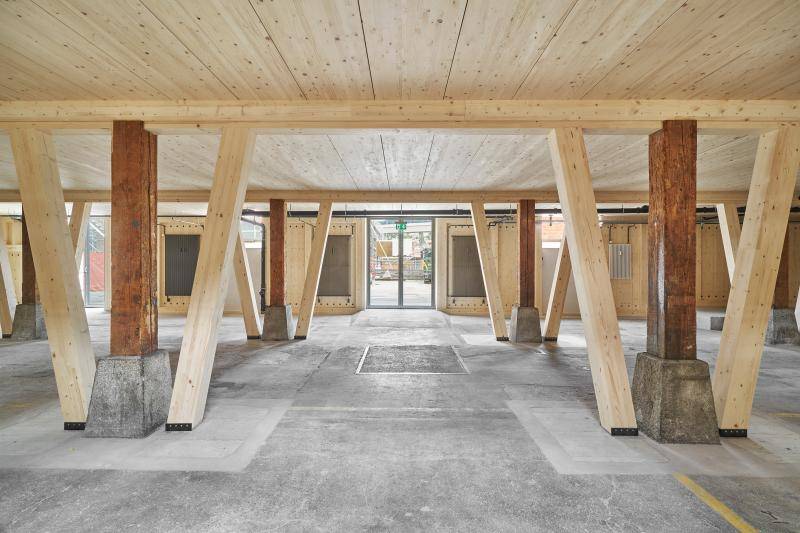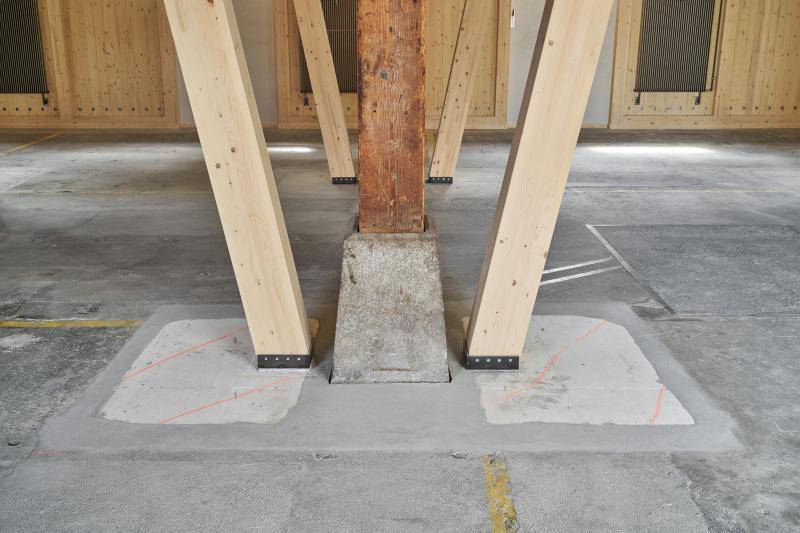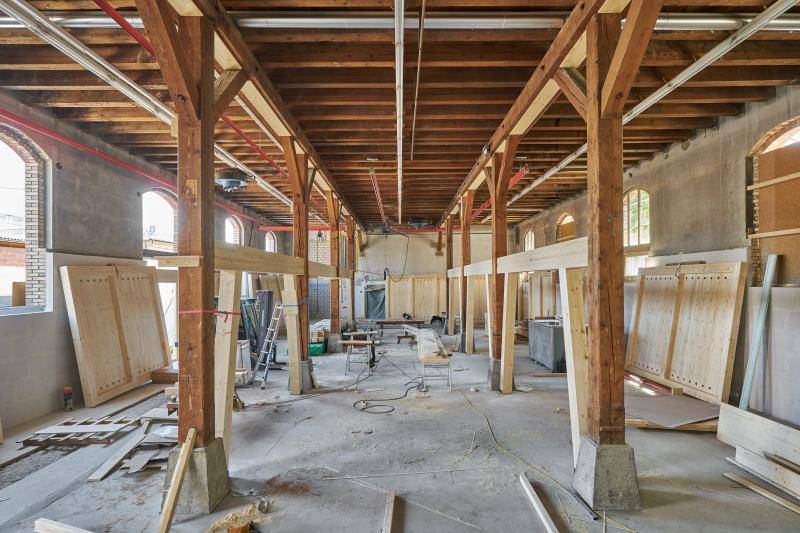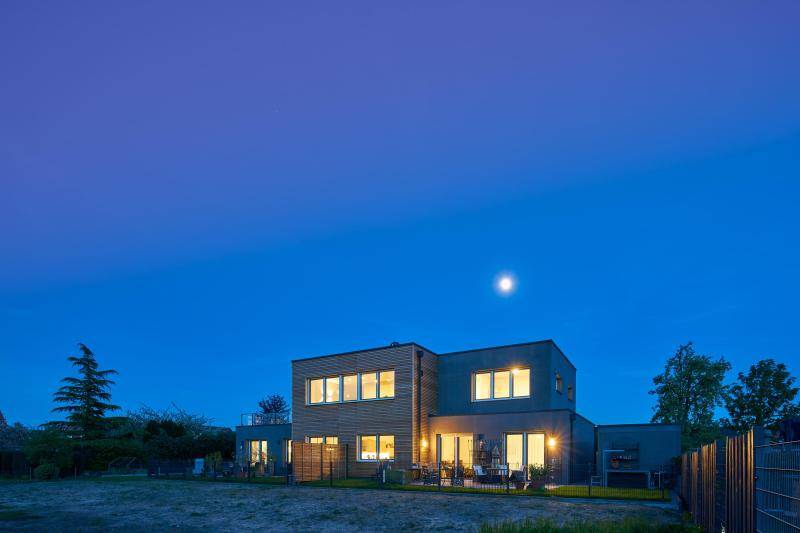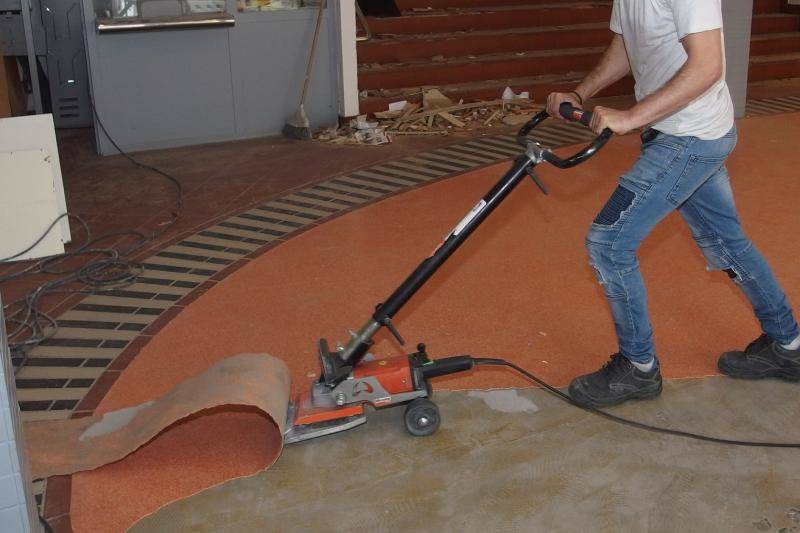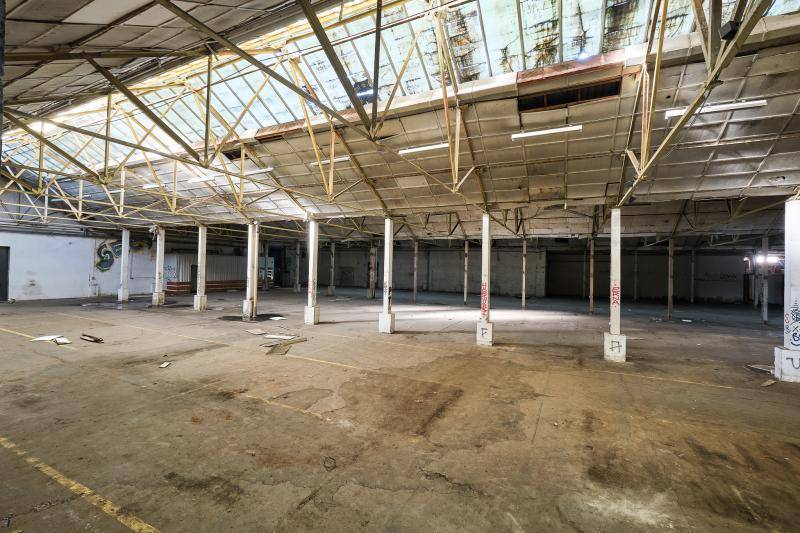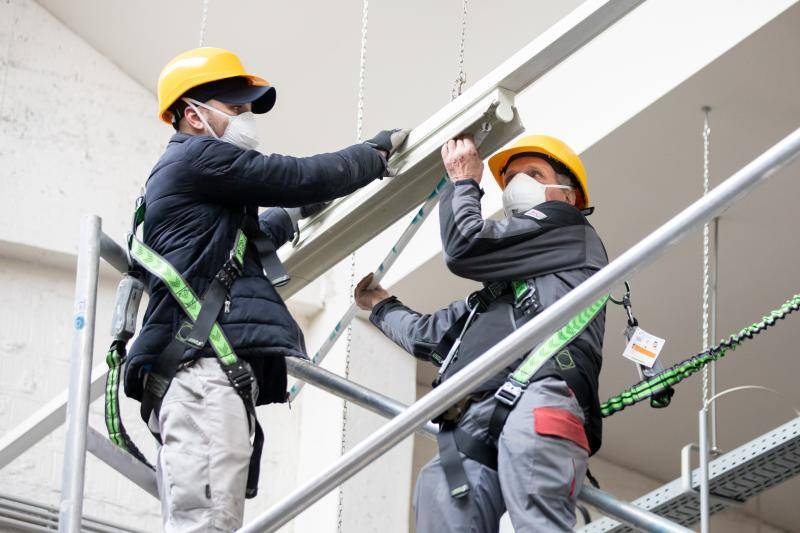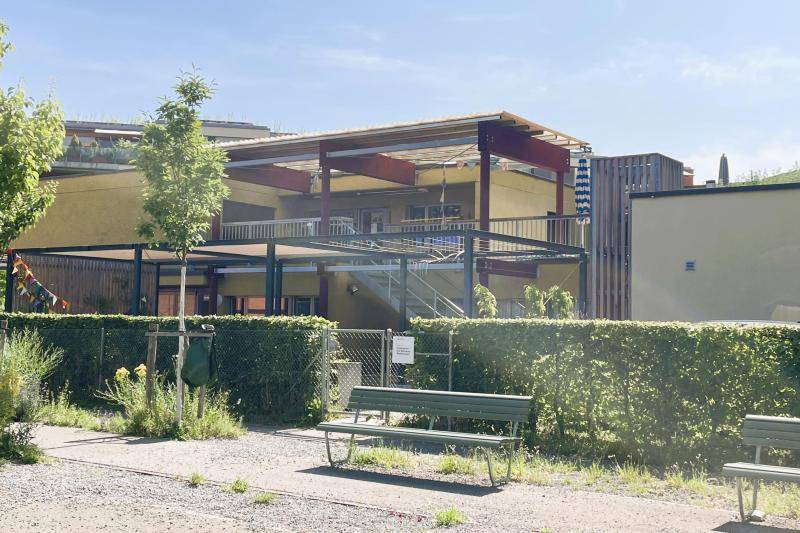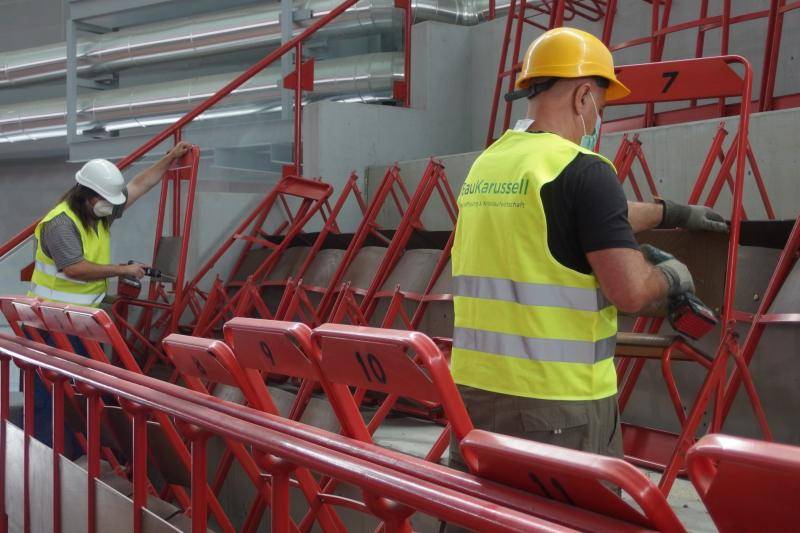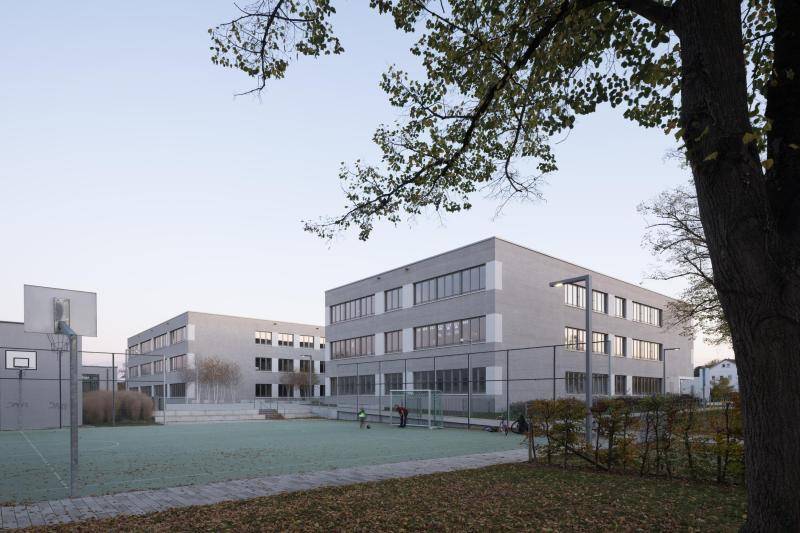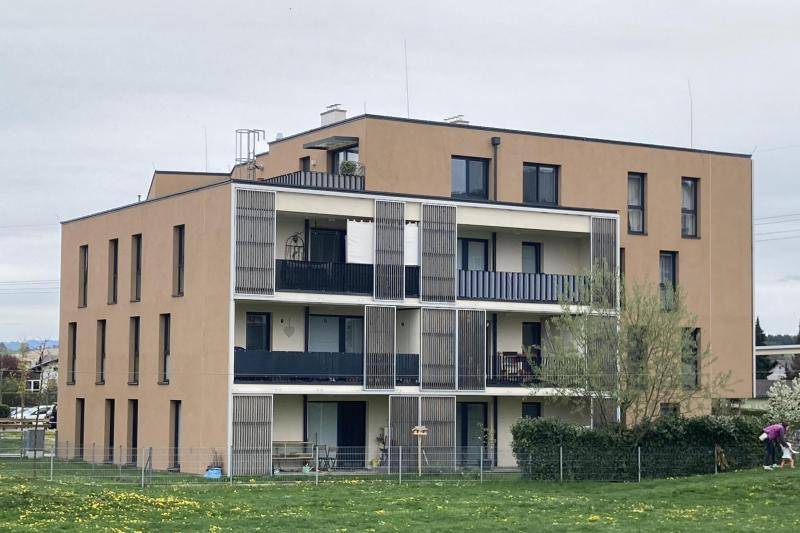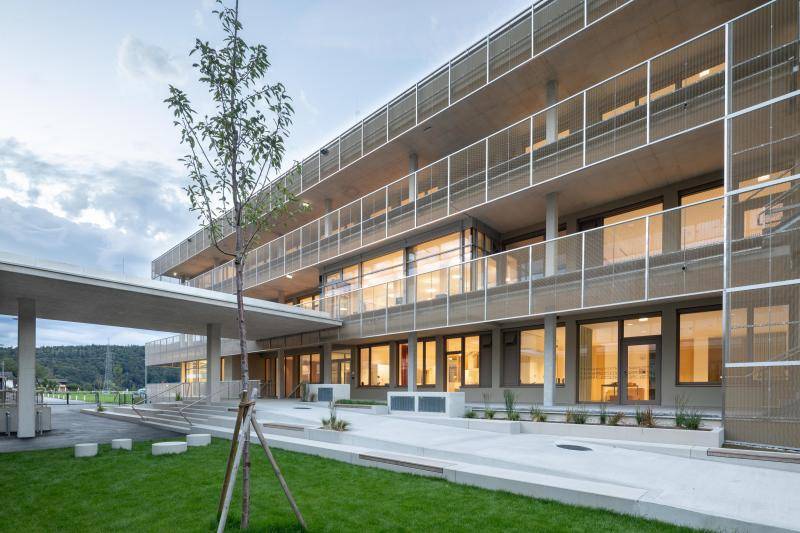Building A – Werkstadt Areal, complete refurbishment
Building A is part of the heritage-listed Werkstadt site in Zürich-Altstetten and underwent comprehensive refurbishment during the second construction phase in 2022. The elongated industrial structure from 1911 was only partially converted: the western third was structurally upgraded, reorganized, and transformed into several small-scale commercial units. The aim was to enable new uses with minimal intervention in the existing fabric – consistently guided by circular construction principles.
2022
ca. 2.130 m²
Structural engineering: wh‑p Ingenieure AG
Timber construction: Strüby Holzbau, Seewen
HVAC planning: Waldhauser + Hermann, Münchenstein
Electrical planning: Gutknecht Elektroplanung
Construction management: Pasquale Baurealisation AG
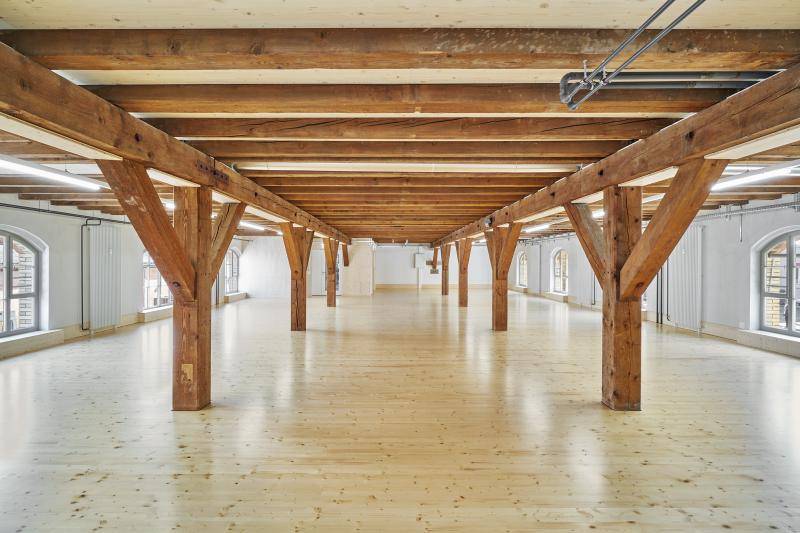
A key aspect of the intervention was the reuse of existing building components. For example, concrete blocks made from demolition material were used as point foundations. Numerous elements such as radiators, doors, sanitary fixtures, light fittings, and natural stone window sills were salvaged from the building, refurbished, and reintegrated. This approach was complemented by a new mezzanine level made of solid timber, constructed as a self-supporting structure that sits independently within the existing building shell and is entirely free of cement. Both the timber platform and the newly added partition walls were designed to be mono-material and reversible.
The energy retrofit followed a low-tech strategy: insulation materials were left exposed, and complex building services were largely avoided. Ventilation is provided via operable windows, which not only reduces energy demand but also preserves the spatial legibility of the original structure. All upgrades were implemented with a minimal intervention approach—ensuring that the historic load-bearing elements remain visible and unaltered.
Building A exemplifies how existing structures can be transformed with technical precision and architectural care—through reuse, material separation, modular timber additions, and flexible spatial layouts. The project demonstrates a contemporary model for preserving built heritage that balances design quality with resource efficiency.
